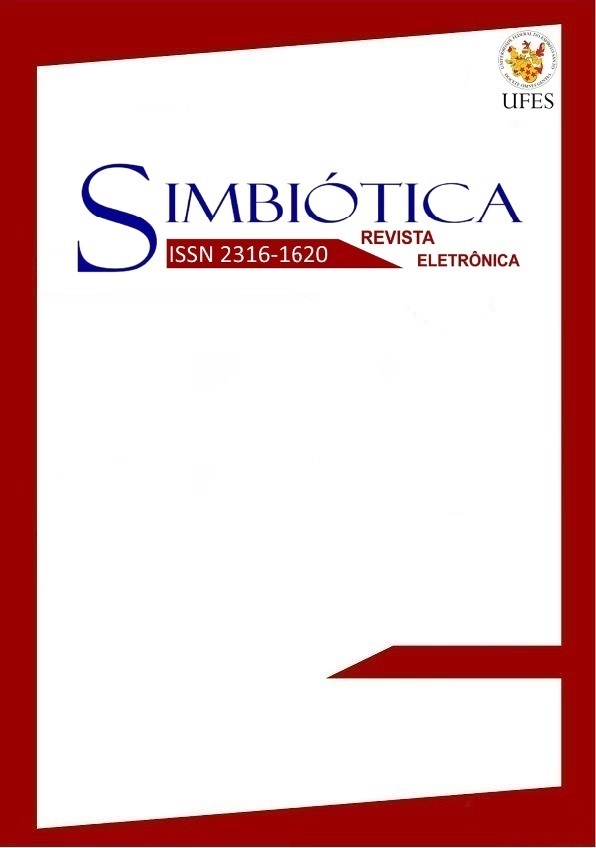A reinvenção do mito: implicações para os estudos em história das religiões e religiosidades
DOI:
https://doi.org/10.47456/simbitica.v1i5.6415Resumo
A religiosidade está na matriz da existência humana. Como analisar cientificamente aquilo que é produto de subjetividades ou de pura abstração? O trabalho do historiador está em analisar as “regras de funcionamentos sociais”, contidas nas práticas religiosas. Meu interesse particular aqui está nos mitos: o que são? Que tipo de práticas eles engendram ou regras de funcionamento social que ajudam a gerir? Que crenças comuns gravitam em torno do mito? Como se dá sua aceitação ou rechaço no mundo contemporâneo? Essas são algumas das questões que neste ensaio se pretende abordar como parâmetros de análise para uma história das religiões e religiosidades.
Palavras-chave: sagrado; mito; história; religiosidade.
Abstract: Religiosity is in the matrix of human existence. How to analyze scientifically what is the product of subjectivity or pure abstraction? The historian's work is to analyze the "rules of social runs" contained in religious practices. My particular interest here lay on the myths: what are they? What kind of practices they engender or social functioning rules they help to manage? What common beliefs revolve around the myth? How is its acceptance or rejection in the contemporary world? These are some of the questions that this paper aims to examine in order to give some analysis parameters for a history of religions and religiosity.
Keywords: sacred; myth; history; religiosity.
Resumen: La religiosidad se encuentra en la matriz de la existencia humana. ¿Cómo investigar científicamente lo que es el producto de la subjetividad o la abstracción pura? La tarea del historiador es analizar las "reglas de funcionamientos sociales" que figuran en las prácticas religiosas. Mi particular interés aquí son los mitos: ¿qué son? ¿Qué tipo de prácticas que engendran o normas de funcionamiento social que ayudan a manejar? ¿Qué creencias comunes giran en torno al mito? ¿Cómo es su aceptación o rechazo en el mundo contemporáneo? Estas son algunas de las preguntas que en el presente documento se tiene por objeto examinar como parámetros de análisis para una historia de las religiones y la religiosidad.
Palabras clave: sagrado; mito; historia; religiosidad.
Downloads
Publicado
Edição
Seção
Licença
Copyright (c) 2020 Jonathan Menezes

Este trabalho está licenciado sob uma licença Creative Commons Attribution-NonCommercial-NoDerivatives 4.0 International License.
Autores que publicam nesta revista concordam com os seguintes termos:
a. Autores mantém os direitos autorais e concedem à revista o direito de primeira publicação, com o trabalho simultaneamente licenciado sob a Creative Commons - Atribuição-NãoComercial 4.0 Internacional.
b. Compartilhar - copiar e distribuir o material em qualquer meio ou formato.
Adaptar - remix, transformar e construir sobre o material para qualquer finalidade, inclusive comercial.
c. Autores têm autorização para assumir contratos adicionais separadamente, para distribuição não-exclusiva da versão do trabalho publicada nesta revista (ex.: publicar em repositório institucional ou como capítulo de livro), com reconhecimento de autoria e publicação inicial nesta revista.
d. Autores têm permissão e são estimulados a publicar e distribuir seu trabalho online (ex.: em repositórios institucionais ou na sua página pessoal) a qualquer ponto antes ou durante o processo editorial, já que isso pode gerar alterações produtivas, bem como aumentar o impacto e a citação do trabalho publicado (Veja O Efeito do Acesso Livre).
Authors who publish in this journal agree to the following terms:
a. Authors retain the copyright and grant the magazine the right of first publication, with work simultaneously licensed under the CCreative Commons - Atribuição-NãoComercial 4.0 Internacional.
b. Share - copy and distribute the material in any medium or format.
Adapt - remix, transform and build on the material for any purpose, including commercial.
c. Authors are authorized to take additional contracts separately, for non-exclusive distribution of the version of the work published in this journal (eg, publish in institutional repository or as a book chapter), with acknowledgment of authorship and initial publication in this journal.
d. Authors are allowed and encouraged to publish and distribute their work online (eg.: in institutional repositories or on their personal page) at any point before or during the editorial process, as this can generate productive changes as well as increase the impact and the citation of the published work (See The Effect of Free Access).











